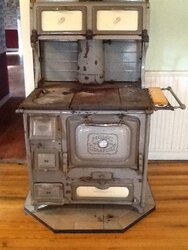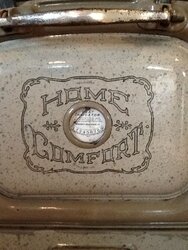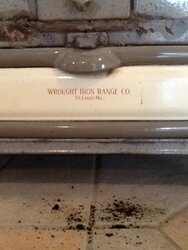All:
My girlfriend and I just bought a farm property. The old house house this old wood burning stove in the kitchen. The previous owners used it, so I'm looking forward to lighting it up. Can any tell me anything about it? More specifically, can anyone point me to some good information on how to use one of these? This is a first for me. It looks like you start a fire in the upper chamber on the left. The middle chamber on the left appears to be a way to regulate air into the fire, and the bottom chamber on the left appears to be a ash catching pan. I'm not sure what the chamber under the oven is for? The thing is caked full of ash and other burned up debris. I'm wondering if it should be thoroughly cleaned out or not?
Any in sight the community can offer is greatly appreciated.
Thanks,
Bob



My girlfriend and I just bought a farm property. The old house house this old wood burning stove in the kitchen. The previous owners used it, so I'm looking forward to lighting it up. Can any tell me anything about it? More specifically, can anyone point me to some good information on how to use one of these? This is a first for me. It looks like you start a fire in the upper chamber on the left. The middle chamber on the left appears to be a way to regulate air into the fire, and the bottom chamber on the left appears to be a ash catching pan. I'm not sure what the chamber under the oven is for? The thing is caked full of ash and other burned up debris. I'm wondering if it should be thoroughly cleaned out or not?
Any in sight the community can offer is greatly appreciated.
Thanks,
Bob






